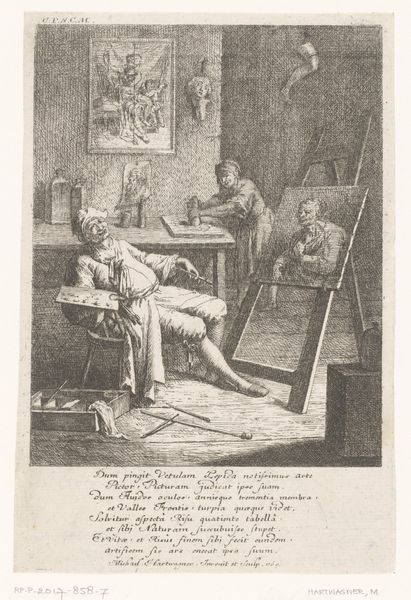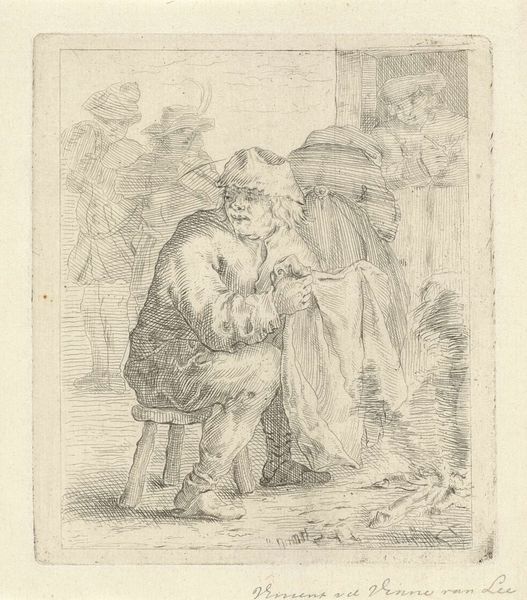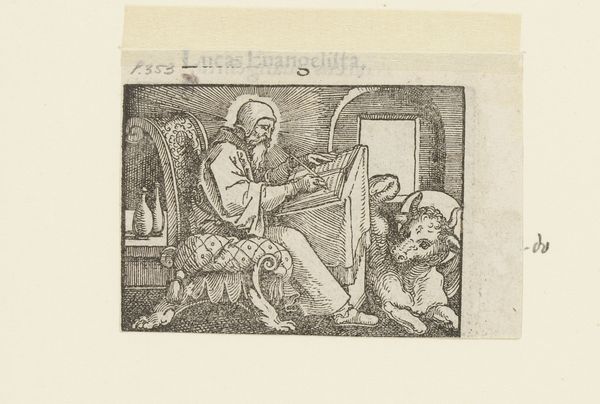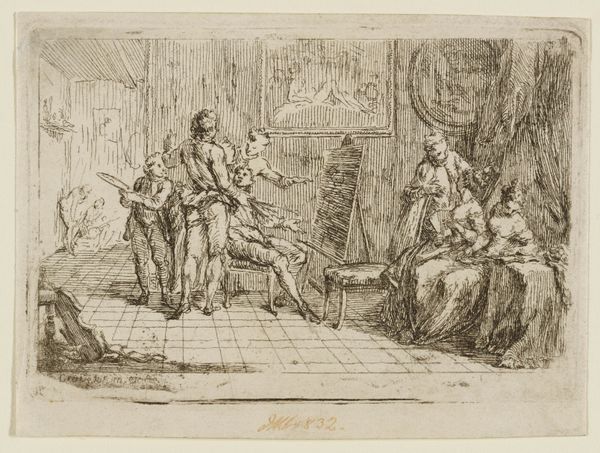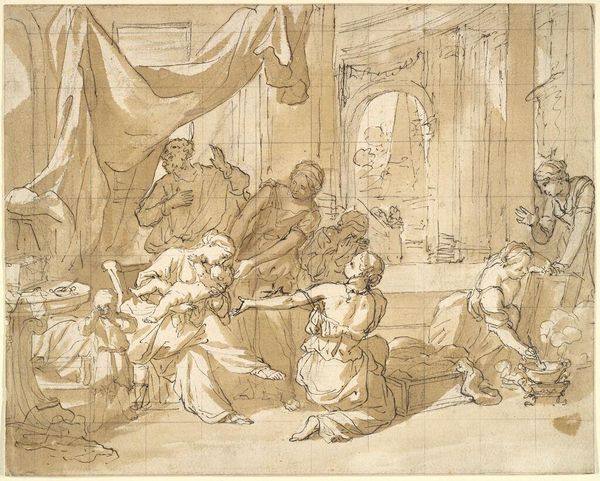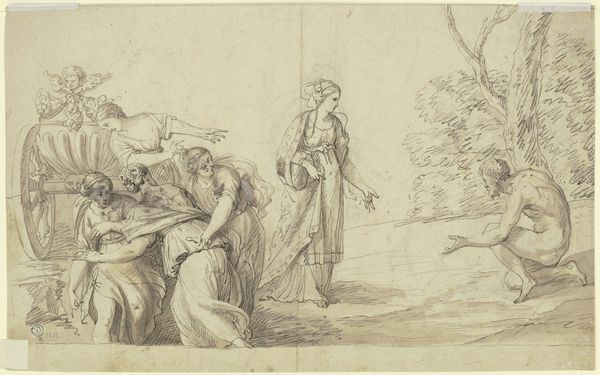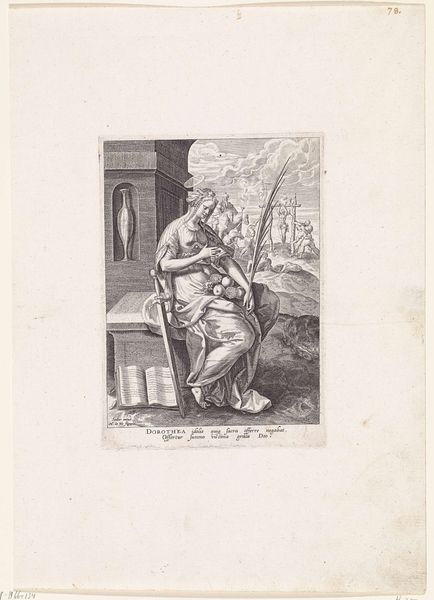
Dimensions: support: 79 x 121 mm
Copyright: CC-BY-NC-ND 4.0 DEED, Photo: Tate
Editor: This is a print by Thomas Stothard, probably from the late 18th or early 19th century, called "The Painter Who Pleased Nobody and Everybody." It looks like the artist is in his studio, painting a portrait, but the sitter seems unhappy. What stands out to you about this piece? Curator: Considering this print, it's crucial to examine the economic conditions of art production at the time. How were artists like Stothard navigating the market, and who were their patrons? This image highlights the complex relationship between artist, patron, and the commodification of portraiture. Editor: So, you're saying that the title might suggest a critique of the art market? Curator: Precisely. Stothard likely grappled with balancing artistic integrity and the demands of his clientele. This print invites us to consider the labor and social context embedded in its creation. Editor: That's a completely different way of looking at it! I was just thinking about the expressions on their faces. Curator: Indeed, focusing on the means of production and consumption reveals hidden layers of meaning.
Comments
tate 8 months ago
⋮
http://www.tate.org.uk/art/artworks/stothard-the-painter-who-pleased-nobody-and-everybody-t08723
Join the conversation
Join millions of artists and users on Artera today and experience the ultimate creative platform.
tate 8 months ago
⋮
This scene is set in the studio of an aspiring young artist who is trying to impress his patron. On the easel is an idealised portrait, which clearly aims to flatter the sitter. Behind, to the left, is the artist's 'sitter's chair' where his clients pose for their portraits. To the right, by the screen, is the artist's 'lay figure', a jointed doll used for modelling drapery. The young artist's affable manner and the classical trappings of his studio suggest that his main aim is to make his mark in fashionable society. Gallery label, August 2004
